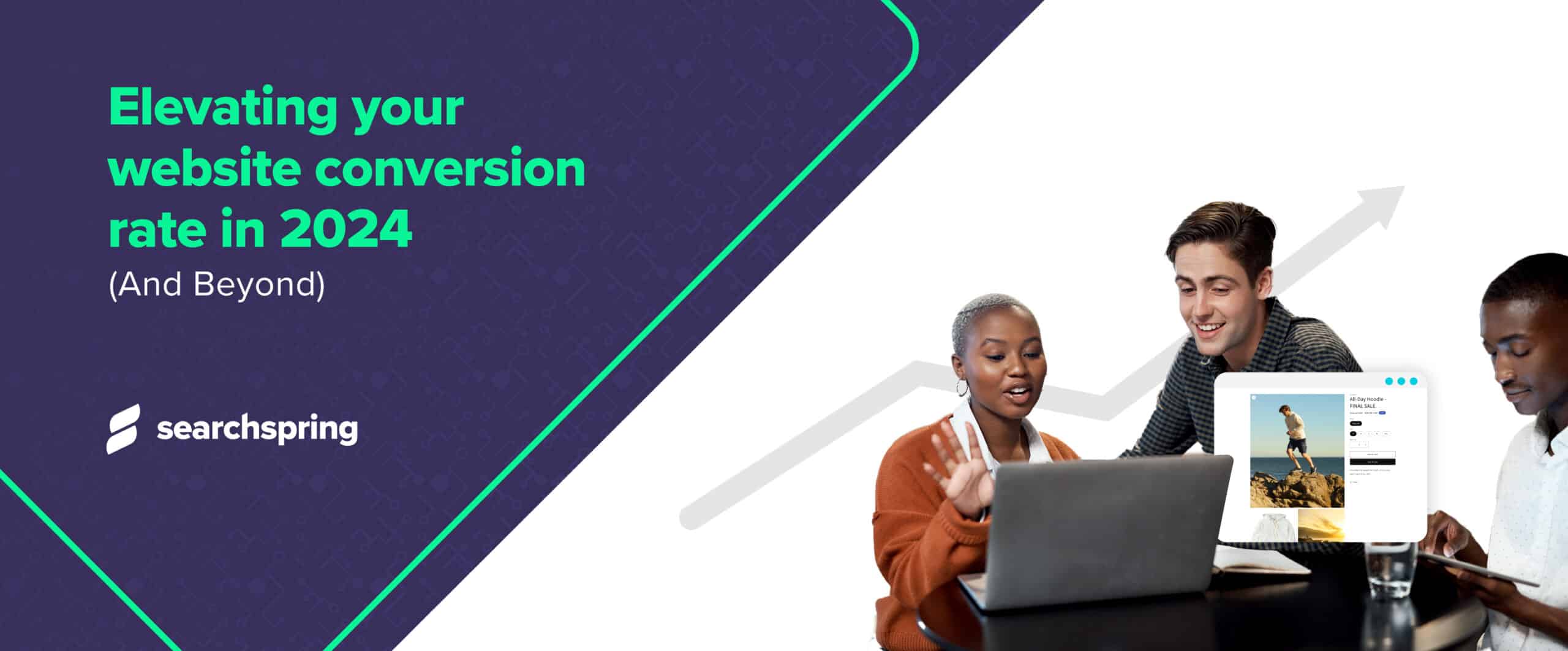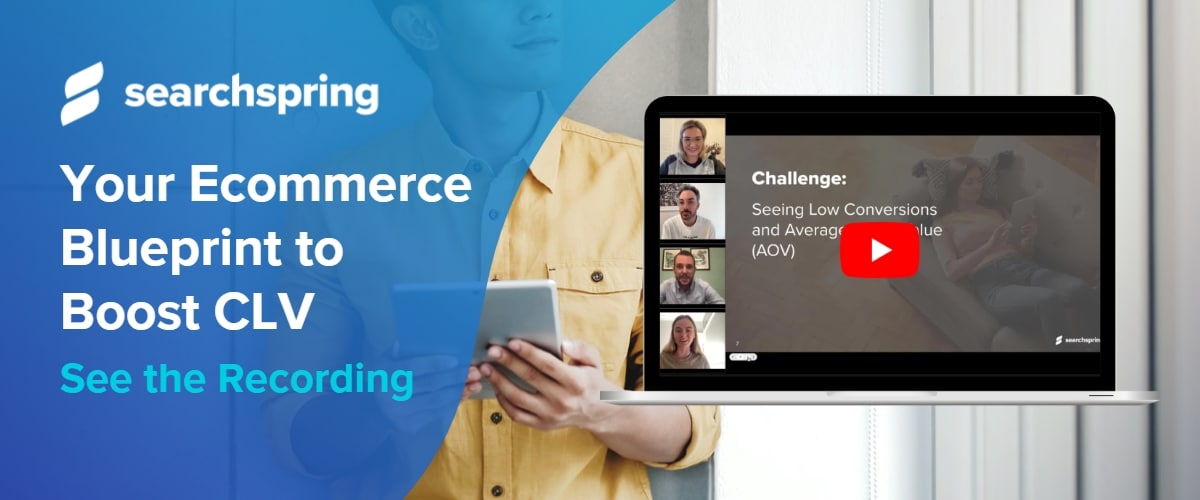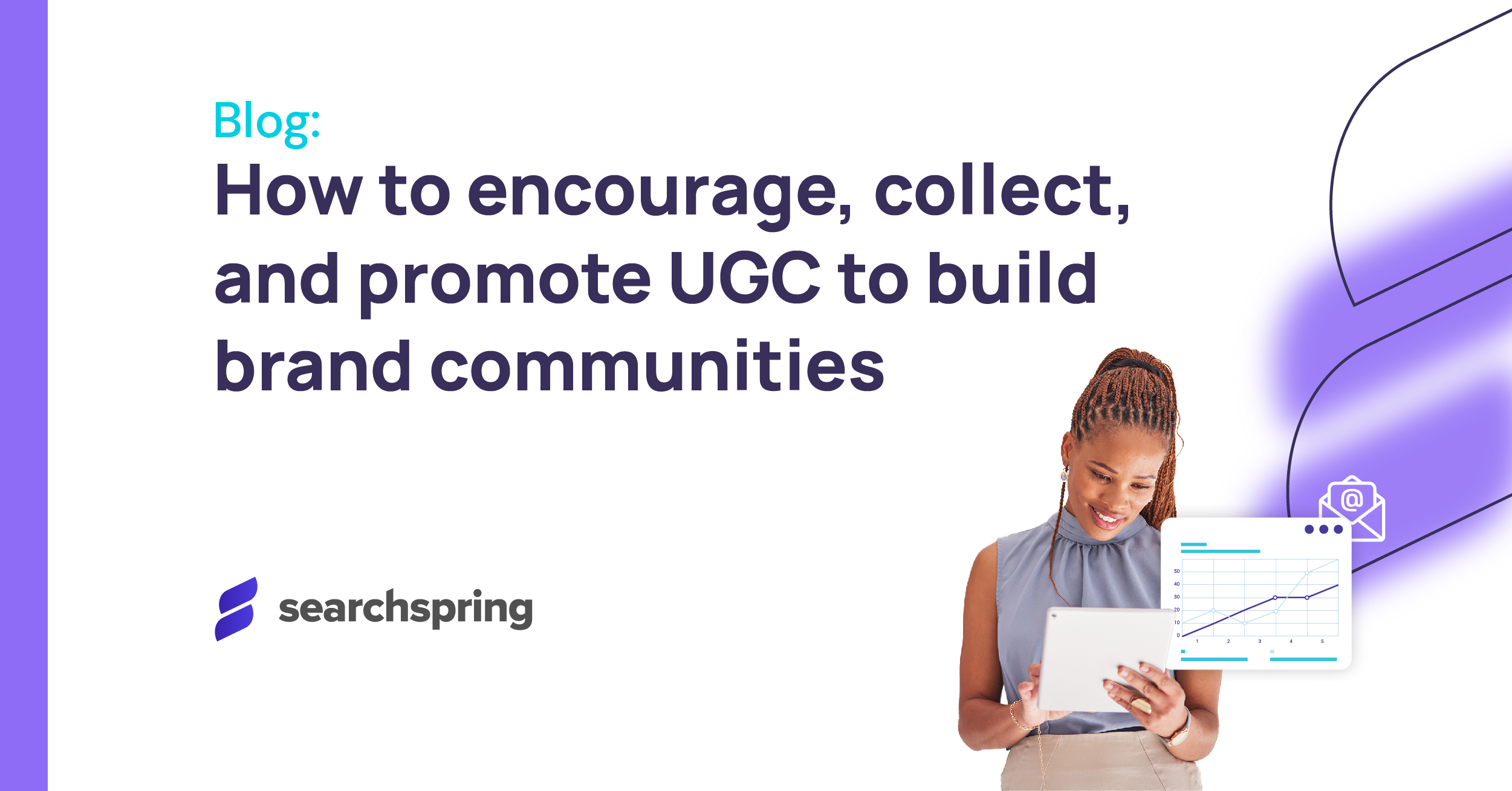In 2023, the average shopping cart abandonment rate globally sits at around 70.2%, as per Dynamic Yield research. The Asia-Pacific region (APAC) sees the most abandoned carts overall at 82.5%, followed by EMEA at 73.3%, then the Americas at 69.4%.
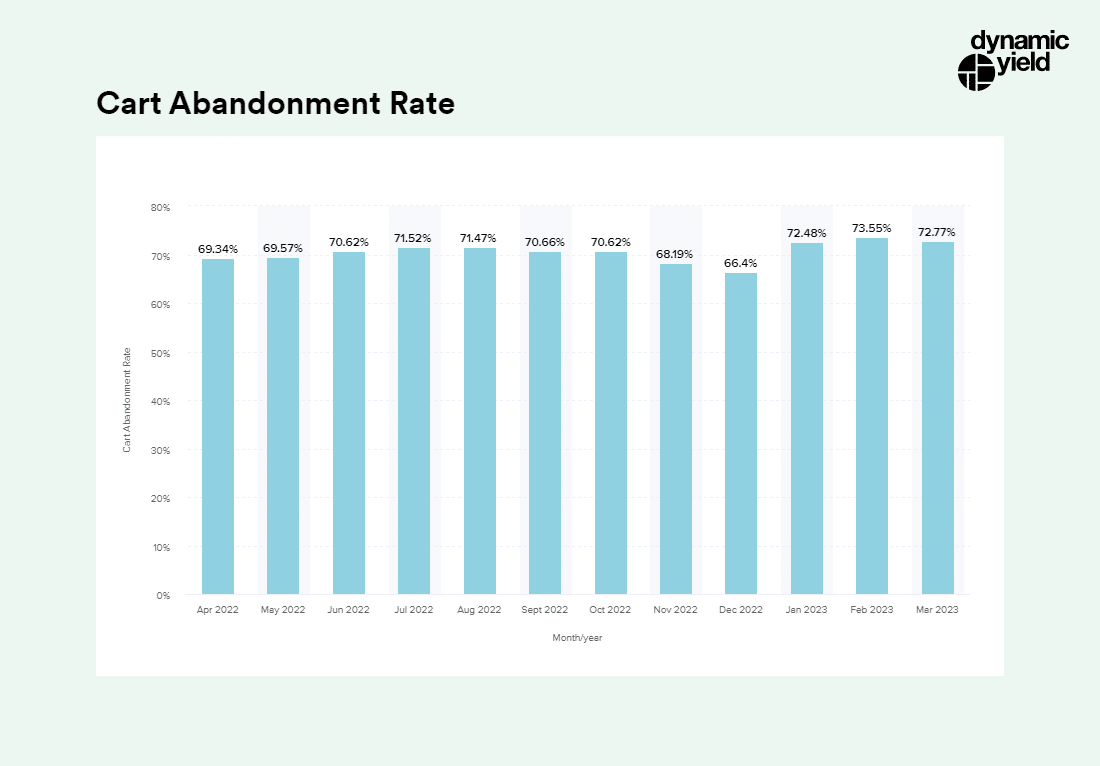 Online retailers battle against shopping cart abandonment on many fronts. In Australia, a slow economy is adding even more pressure. The ANZ-Roy Morgan Consumer Confidence index shows that shoppers are showing caution in 2023. In mid-May, the index was down to 77.7 after spending ten straight weeks below the 80 mark. This data shows the longest stretch below 80 since the index began its weekly reporting in October 2008.
Online retailers battle against shopping cart abandonment on many fronts. In Australia, a slow economy is adding even more pressure. The ANZ-Roy Morgan Consumer Confidence index shows that shoppers are showing caution in 2023. In mid-May, the index was down to 77.7 after spending ten straight weeks below the 80 mark. This data shows the longest stretch below 80 since the index began its weekly reporting in October 2008.
However, it’s not all bad news for online retailers. Those focusing on customer retention are well-placed to weather the downturn and come out ahead of competitors.
Before jumping into our fast ecommerce tips to boost customer retention (even in a slow economy), it’s essential to understand customer retention and the challenges online retailers face in 2023.
Understanding Customer Acquisition vs Customer Retention
It’s critical for ecommerce brands to get customer acquisition and customer retention strategies right. However, retention is vital from a profitability perspective. That’s because your shopper’s initial order may not be enough to recoup the costs of acquiring that customer. A recent report by FirstPageSage shows an average Customer Acquisition Cost (CAC) from organic traffic of USD$64, with paid traffic edging higher at USD$68.
You can calculate your business’ by dividing all sales and marketing costs, technical, creative, publishing, and operational costs, such as inventory management, by your total number of new customers acquired within a defined period.
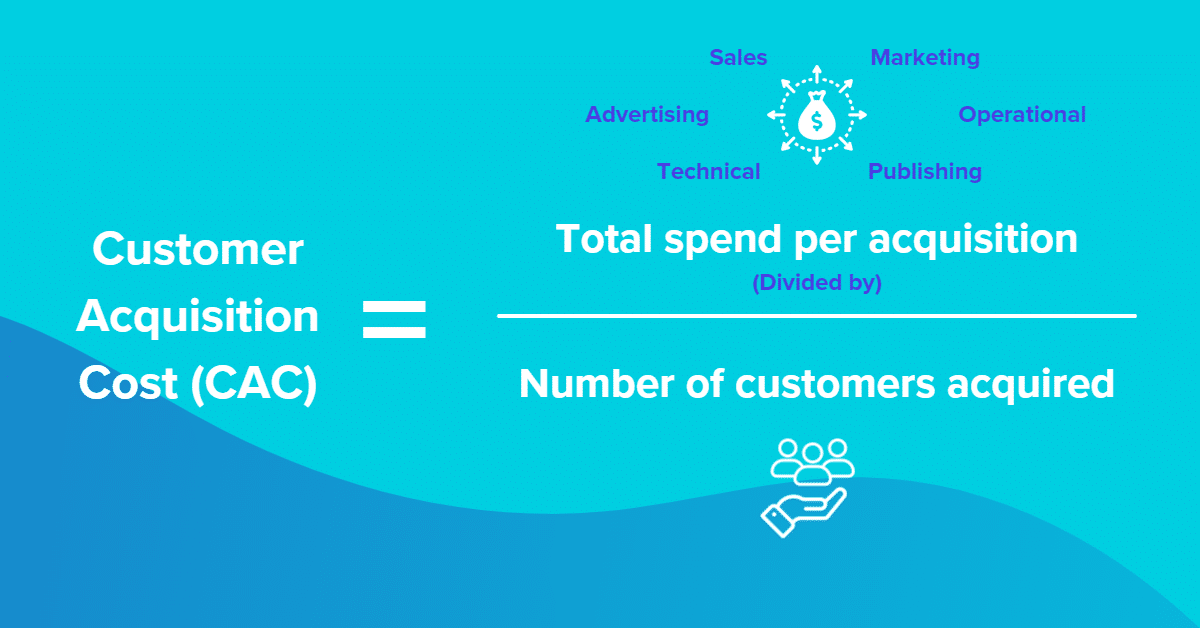
When you consider the sheer amount of time, effort, and cost involved with attracting customers, the importance of re-converting new customers becomes clear.
The Challenges and Priorities Online Retailers Face in 2023
An April 2023 survey by Searchspring of ecommerce industry professionals revealed the #1 challenge in attracting and retaining shoppers is customer retention – the “Repeat Purchases, Loyalty and Rewards” category. “Marketing and Advertising” came in 2nd place, with “Pricing & Competition”, “Awareness & Acquisition”, and “Conversion & AOV” in 3rd, 4th, and 5th places.
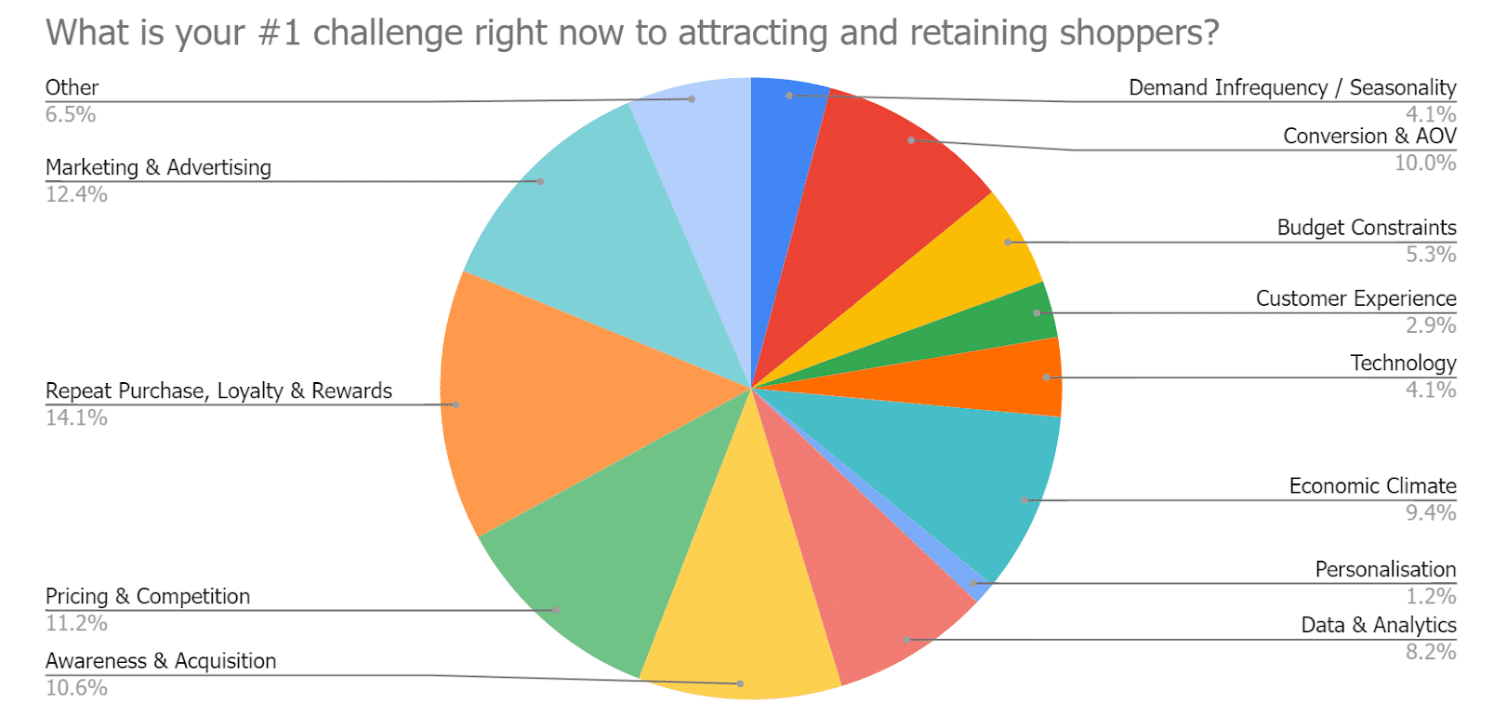
While it’s clear that turning consumers into loyal, repeat shoppers is top of mind, the range of responses also indicates the complexity of effectively attracting and retaining customers.
A Tough Economy Brings Robust Opportunity
Throughout the pandemic, lockdowns and social distancing forced shoppers online in record numbers. Retailers adapted to rapidly shifting digital buying behaviours, bringing innovation to ecommerce and cross-channel experiences to engage customers in new ways. Consumers’ expectations of the buying journey have evolved. So providing an outstanding online shopping experience is more crucial than ever before.
In 2023, shoppers are also more mindful of their non-essential product purchases. A recent PwC report shows that 69% of consumers have changed their non-essential spending habits in the past six months. At the same time, 43% plan to increase online shopping in the next six months.
Because many shoppers have less available cash than last year, they are carefully considering their purchases. However, many are still ready to buy when the time is right. Online retailers can cash in on those considered purchase opportunities – by offering the right products at the right time through data-led, personalised buying journeys.
First Things First: Focus on the Right Data
Stocktake Your Website
Every good improvement plan starts with benchmarking. Before implementing tactics to drive additional repeat purchases, document your site performance. Look at factors including:
- Your site load speed (which affects the experience and your SEO ranking)
- How shoppers arrive at your site, e.g. paid advertising, social, organic, etc.
- The actions site visitors are taking, such as goal conversions and bounces
- Search terms used by shoppers to find products
- Any broken links that may be sending shoppers to dead-ends
Understand Your Shoppers
Review your sales data to understand the current average order value (AOV). AOV is your revenue divided by the total number of orders for a given period.
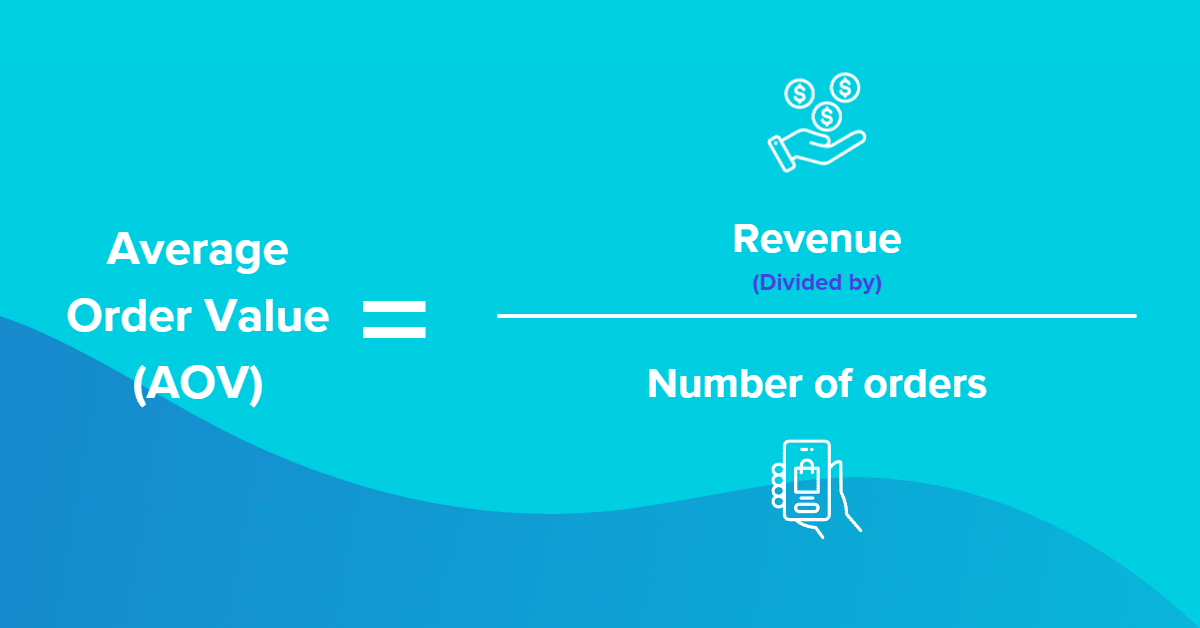
You’ll also want to understand your shoppers at a deeper level – and the actions they are taking on-site. For example, your Google Analytics reporting can provide fantastic insights into the flow of pages shoppers view on your site, where shoppers are arriving from, how long they stay on different pages, events and goal completions triggered, ecommerce tracking, and much more. See SearchEngineJournal’s excellent run-down of metrics and reports.
Metrics such as these provide an excellent baseline to measure and monitor the effect of repeat purchase tactics you implement.
Speed Up the Digital Experience
Fullstory reports that 83% of consumers say what makes a “good” digital experience is being able to “quickly accomplish what I came to do”. Online retailers can help customers do exactly that – by providing an optimised digital shopping experience.
79% of shoppers are likely or very likely to leave a website and purchase elsewhere if a website is too slow, as per the BigCommerce State of Ecommerce ANZ report. This data highlights a huge opportunity to increase initial and repeat purchases by optimising website performance.
What do consumers think is acceptable? Portent research shows that a B2C site loading in 1 second has an ecommerce conversion rate 2.5x higher than a site loading in 5 seconds. So aim for a 1-4 second load time to help boost conversion rates on your site and keep customers wanting to come back.
You’ll also want to conduct performance and load testing. It’s critical to know that your infrastructure can handle the influx of traffic during the sales and peak periods, leaving customers with a consistently speedy on-site experience.
Create a Marvellous Mobile Experience
As shown in StatCounter Global Market Share data, almost 54% of all internet traffic comes from mobile devices. The continued rise of social selling is also driving additional traffic to retailers’ mobile sites. For example, this year’s Research and Markets report forecasts the social commerce industry in Australia to grow by 14.4% annually to reach US$1.66 billion in 2023. So the mobile experience must be fast and effective to keep shoppers coming back.
Top tips for creating an outstanding mobile shopping experience include:
Think Thumb-Friendly
Thumb-friendly zones on your mobile layout can help shoppers reach all the important website aspects with their thumb when using their phone one-handed. By thinking about how shoppers naturally grip their smartphones, you can ensure elements are easy-to-reach. For example, add-to-cart and checkout buttons are high-value interactions that need to be accessible by even those with the smallest reach.
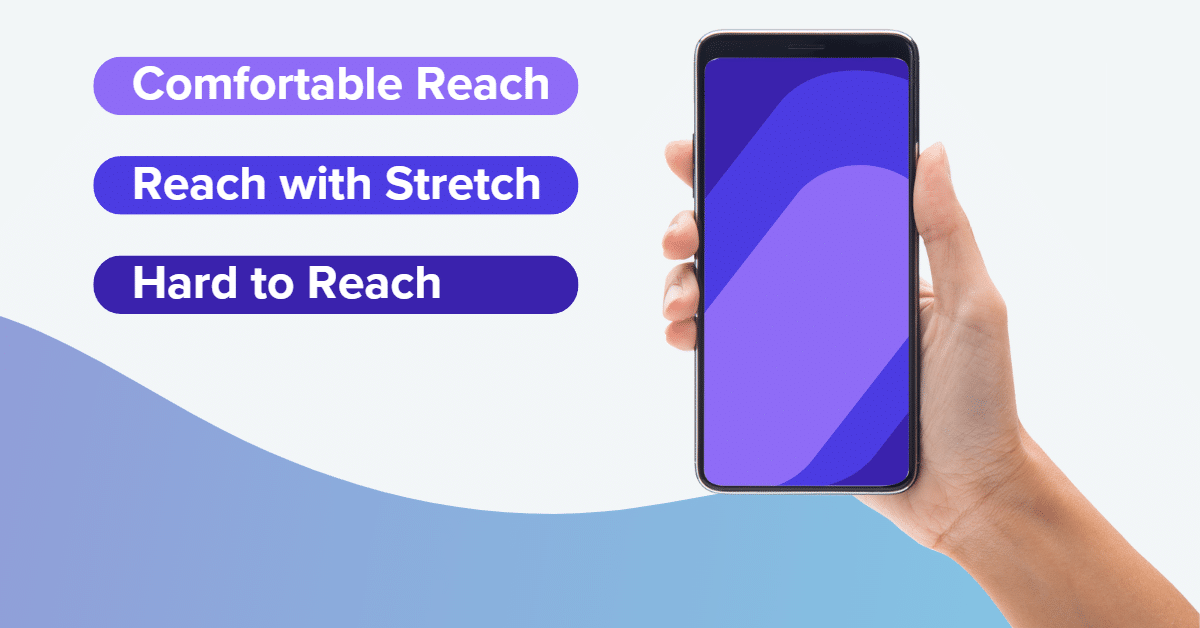
Minimalism and Mobile UX Go Hand-in-Hand
Whether your buyer is on a phone or tablet, the screen size will be much smaller than a standard laptop or desktop computer. If you attempt to get every element of desktop design into a mobile format, you risk cluttering and confusing the experience.
Review your site’s mobile design, paying close attention to the essential elements. Then, ask yourself if there are design or data items you can restrict on mobile to offer a stripped-back, streamlined mobile buying journey.
Offer Fantastic Faceted Search
Keep your faceted search function (the ability to refine search results with filters) available without it getting in the way. A collapsible filter menu, as Boody uses, streamlines the product discovery journey by helping shoppers refine and hone in on their perfect products faster.
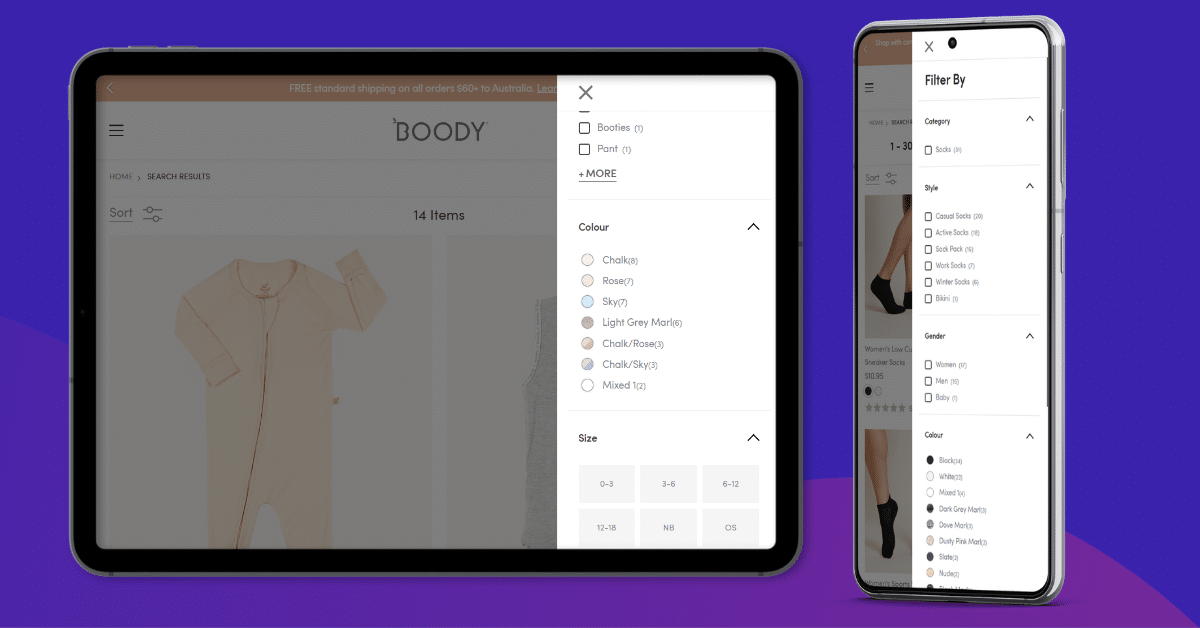
Leave Sufficient Space for Search
On mobile devices, you need to give the online shopping experience plenty of room to breathe. Your mobile search overlay is vital to creating that space. Instead of having a small search bar at the top or bottom, expand it to clear distractions from the rest of the page. Pair of Thieves is an excellent example of brilliant mobile design. Shoppers are also presented with a spacious selection of relevant product suggestions when they input their search queries.
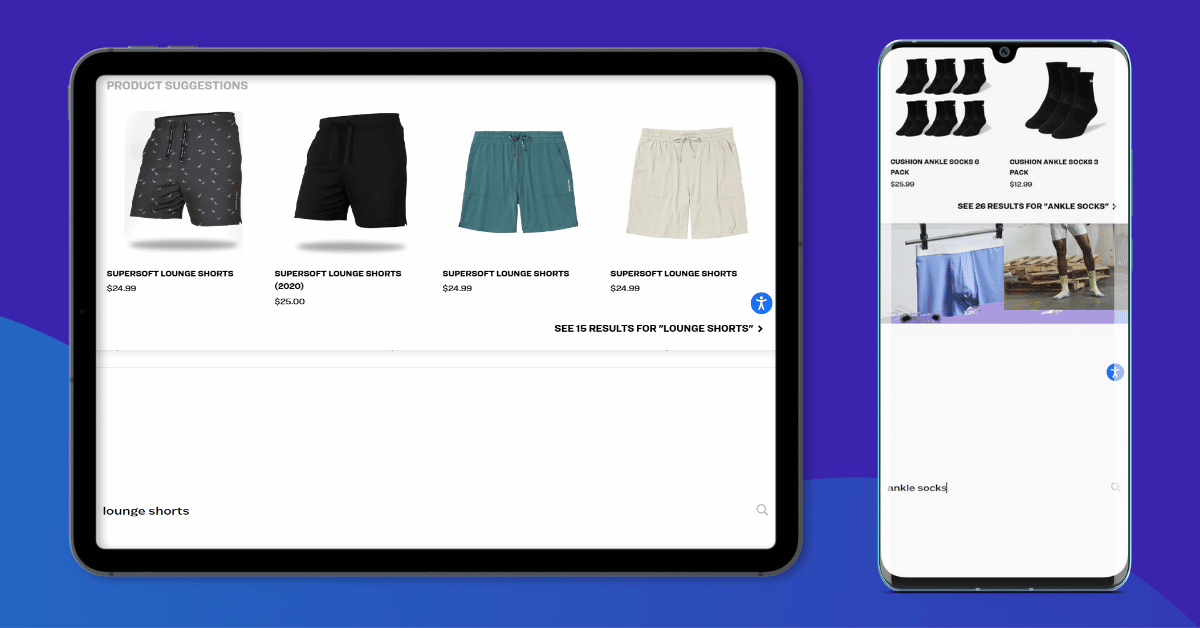
Streamline the Checkout Process
You have all the basic info needed after a shopper completes their initial order. They’ve given you their name, email, contact number, and delivery details. Asking them to re-enter this data every time can make the checkout process laborious.
1-Click Checkout stores a shopper’s payment and shipping information using cookies to eliminate re-entry of information when that buyer returns to your store. This process can make the path-to-purchase much faster, particularly for mobile users who want to remain on one site or app. See the in-depth Shopify article about 1-Click Checkout for more information.
Help Shoppers Find What They Want
Online retailers commonly face the challenge of seeing low conversions and AOV (average order value). These issues are caused by various influencing factors, such as design and UX problems, product seasonality, a lack of trust signals, unclear CTAs (calls-to-action), complex checkout processes, and the inability for shoppers to quickly find what they want.
By helping shoppers find their perfect items faster, you can significantly boost conversion and AOV. For example, Australian fashion success story St Frock increased conversions by 18% and AOV by 20%. How? The company implemented a search, merchandising, and personalisation platform. Read more in our St Frock customer story.
Spell it Out for Shoppers
According to Baymard research, a whopping 70% of the search engines are unable to return relevant results for product type synonyms – requiring users to search using the exact same jargon as the site – while 34% of the sites don’t yield useful results when consumers search for a model number or misspell just a single character in a product title.
Luckily, synonyms and spell corrections are here to help shoppers find the products they want, regardless of spelling.
Synonyms within the Searchspring platform can be set up as individual or grouped product terms that show shoppers relevant products based on their initial query. For example, if a shopper searches for “pants”, they may want to see items associated with other product terms like “trousers”, “chinos”, “denim”, etc. You can even implement synonyms for product characteristics such as colour. For example, “violet” can return results for products also listed as “purple”, “magenta”, “mauve”, and so on.
Integrated Spell Correction is an additional way to keep the product discovery journey going by providing shoppers with more accurate search suggestions. On top of dictionary-based spelling, terms are also drawn from your product catalogue. This broader range of data means that customers are more likely to find a match regardless of their spelling. This functionality can be extremely helpful for shoppers searching by specific brand or product names. A customer searching for “Banbay”, for example, will always see “Banbé” branded eyewear instead of a zero results page.
Add Some Merchandising Magic
The last thing you want is for customers to see products at the top of pages that have zero stock or aren’t relevant at the time.
A sound merchandising strategy can put the right products in front of the right customers and save your ecommerce team considerable time and effort. For example, Searchspring’s merchandising functionality allows your company to take a “set and forget” approach to lifting the right products into the view of online shoppers.
Intelligent boost rules show items according to the most effective product display order. For example, add a boost rule if you want to promote your winter collection as the season changes. If you would rather move out-of-stock items to the bottom of results, add another boost rule. You can set these rules up as simple or complex as needed to do the heavy lifting and show your buyers the best products.
Alicia Davis, Digital Project Specialist at fashion brand Incu, explains, “It ultimately comes down to that shopping experience. Shoppers don’t want to see your online storefront looking stagnant every time they visit because your lean merchandising team doesn’t have the time or resources to make things more exciting. The benefit of using a tool like Searchspring is the ability to deliver more interesting, personalised experiences while also saving significant time for your merchandisers.”
Make Helpful Suggestions
When consumers are in-store, they have the familiar experience of being served by a shop assistant. That assistant picks up on conversational and behavioural cues about the shopper’s likes and dislikes. You can also give your online consumers this same experience.
Personalised product recommendations can make every shopper feel like the product discovery journey was built just for them. Searchspring uses artificial intelligence to understand your shopper’s behaviour and interest in items, then serves them with more of what they’re sure to love.
Personalised product recommendations can help your brand create a more relevant, tailored on-site experience, cross-sell more effectively, and convert more often.
Add a Local Touch
The Australia Post Inside Australian Online Shopping ecommerce report shows that 27% of shoppers from 40 countries say they will buy more from domestic retailers in the future, while 31% of Australian shoppers plan to buy more local products.
While only some brands have locally-made items, every ecommerce store can bring a local touch to the experience. Geo-Merchandising uses real-time targeting to show shoppers products based on location – by country or even state. Online stores can now create a local feel by offering seasonal products that differ by hemisphere, customising messaging and promotions, and catering to local shipping policies.
Keep them Coming Back
By putting time and effort into creating the ultimate online shopping experience, you’re sure to leave customers with an outstanding impression of your brand that encourages repeat purchases. However, what happens after the checkout is just as critical to keeping customers coming back.
Offer Incredible Customer Service
Customer service is a key differentiator that keeps customers returning and enhances profits. A recent Emplifi survey shows that 61% of respondents would pay at least 5% more if they knew they would receive an outstanding customer experience (CX). Conversely, 49% also said they had left a brand due to poor CX.
Fast responses to customer queries are critical. In the same Emplifi report, 52% of consumers said that when they engage brands via digital channels (website, social, etc.), they expect a response from a brand within an hour. Self-service options are also a must-have for many shoppers. Ecommerce Customer Service platforms like Gorgias can make short of fulfilling even the highest post-purchase service expectations.
A customer service platform also offers a brilliant opportunity to review your customers’ questions and look for patterns. For example, are shoppers asking about return information because it’s difficult to find or unclear on your site? Are they asking about stock levels due to live data being unavailable? Use this information to develop proactive answers to queries, which can then be listed in your FAQs, specific landing pages, or live chat facilities.
Re-Engage Your Abandoned Cart Customers
Abandoned carts shouldn’t be the end of the buyer journey. Instead, they represent a perfect opportunity to prove value to your customers – through hyper-personalised follow-up communications.
Consider adding personalised product recommendations directly into your abandoned-cart email campaigns. Searchspring is one solution, integrating with Klaviyo, to dynamically recommend more products your shopper will like. Read more about how personalised email recommendations work.
Loyalty & Rewards
An unexpected benefit can go a long way. To create surprises for your customers and drive loyalty, leverage your customer data. For example, if you know your customer’s birth date, consider sending a “Happy Birthday, here’s $5 on us!” email.
If you don’t have that kind of data handy, look at other ways to keep the surprises coming – such as offering customers a reward after placing a certain number of orders.
Keep in mind that rewards don’t need to be cash-related, either. Many shoppers will love the idea of free delivery on orders, additional delivery options, priority returns, and other perks.
Connect with Your Tech Partners
Convincing shoppers to spend more is a tall order for any ecommerce marketing team. However, online retailers can give cash-strapped consumers added confidence in their online purchase decisions – by delivering end-to-end shopping experiences that are fast and customer-focused.
While price is a growing concern for consumers, the overall shopping experience can make or break your chance of turning those buyers into loyal repeat customers. Of course, it takes considerable time and effort across various touchpoints (including many more outside of this article) to gain your customers’ loyalty. However, leaning into your ecommerce technology partners can help.
Ask your tech stack partners about their experience and best practices – and how you can gain more value from their solution. Whether you’re currently working with a specific partner or looking to add a solution, connect with those tech partners to gain their tips and insights about driving repeat purchases.
For more ideas on how to boost customer lifetime value, get instant access to your on-demand webinar, Your Ecommerce Blueprint to Boost CLV.
For many more ideas or to see a live demonstration of Searchspring’s award-winning search, merchandising, and personalisation platform built exclusively for ecommerce, get in touch now.

